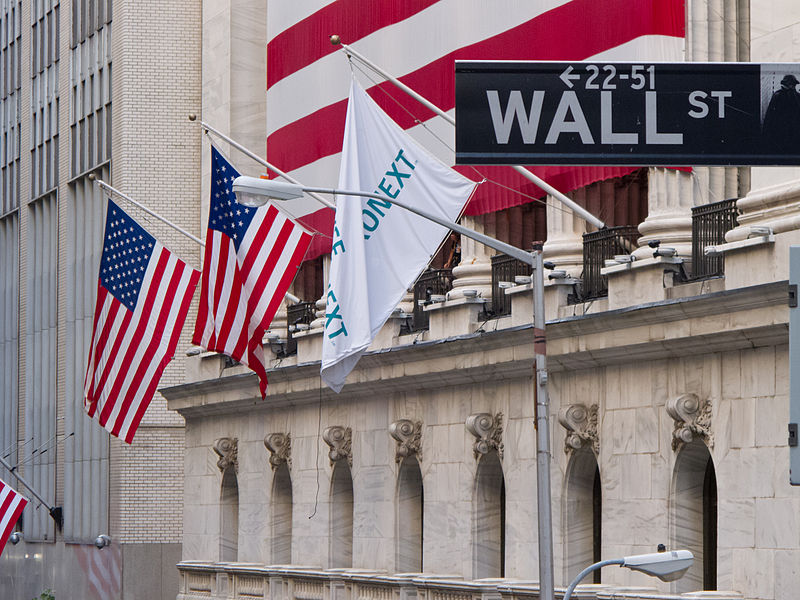Goldman Sachs Group Inc. and other banks that invest in companies are officially on notice: The Federal Reserve wants that ability taken away.
Among several recommendations issued by U.S. banking regulators, one from the Fed urged Congress to prohibit merchant banking, in which firms buy stakes in companies rather than lend them money. In a report released Thursday, the agency also pushed for limits on Wall Street’s ownership of physical commodities after lawmakers accused Goldman Sachs and other banks of seizing unfair advantages in metal and energy markets in recent years.
The report — based on a multi-agency study of banks’ investment activities required by the Dodd-Frank Act — highlighted ways to fix potential risks that regulators didn’t think were handled by the law’s Volcker Rule ban on certain trading and investments. The need for Congress to pass legislation presents the greatest hurdle to the Fed’s recommendations on merchant-banking and the ability of Goldman Sachs and Morgan Stanley to operate mines, warehouse aluminum and ship oil.
“Congress has an obligation to give their recommendations serious attention,” U.S. Senator Sherrod Brown, the most senior Democrat on the Banking Committee, said in a statement.
A 2014 Senate investigation into banks’ commodities businesses revealed Goldman Sachs had almost $15 billion in merchant banking investments. The firm’s most recent filings show it booked $1.2 billion in revenue through the first six months of this year in its division that houses merchant banking, with equity investments contributing $626 million of that.
Copper Investments
Another agency that participated in issuing the report, the Office of the Comptroller of the Currency, said it plans to restrict lenders’ holdings of the hard-to-value securities. The OCC also proposed a rule Thursday that would curtail banks’ investments in certain industrial metals including copper and aluminum.
The Fed called for the repeal of exemptions for industrial loan companies, which are lenders generally owned by non-financial firms, that allow them to operate outside of rules that affect banks. The Fed’s section of the report said its aim was to level the playing field among financial firms and “help ensure the separation of banking and commerce.”
Spokesmen for Goldman Sachs, Morgan Stanley and JPMorgan Chase & Co. — another bank that could be affected by the recommendations — declined to comment on the regulators’ report.
A coalition of financial industry associations called the recommendations “unfortunate and ill-considered” in a statement. The groups — including the Clearing House Association, American Bankers Association and Securities Industry and Financial Markets Association — said merchant banking has financed startups and fueled job growth. The groups also argued that it hasn’t been shown to pose a risk to the financial system.
Congressional Gridlock
The Fed and the U.S. Treasury Department adopted a merchant-banking rule in 2001 after the 1999 Gramm-Leach-Bliley Act gave banks the right to make such investments. But making statutory changes to merchant banking and other industry laws would require intervention from lawmakers — a tall order in a politically-divided Congress that has passed only a few significant bills affecting the financial system in recent years. That leaves any immediate impact of the report in doubt.
The Fed, OCC and the Federal Deposit Insurance Corp. were required by Dodd-Frank to dig into further risks from bank investments, and they were supposed to issue the report almost five years ago.
The document was called for by a provision tucked more than 200 pages into Dodd-Frank under section 620. Lenders’ government watchdogs had to review the industry’s investment activities to determine whether they “could have a negative effect on the safety and soundness” of the financial system. But the mandate was easy to lose track of next to the passage that preceded it: section 619, which is better known as the Volcker Rule.
Goldman Sachs, Morgan Stanley and JPMorgan were the targets of criticism that led to the 2014 Senate review of their commodities businesses. It found lenders used their ownership of metals and other physical commodities to dominate markets and gain unfair trading advantages. The physical commodities businesses at Goldman Sachs and Morgan Stanley were protected by grandfathering that allowed them wider abilities than most banks — an advantage the Fed is seeking to end.
Morgan Stanley sold off its oil business last year and backed away from industrial metals trading, while JPMorgan shed a big part of its physical commodities business in 2014. While Goldman Sachs dumped a coal-mining operation in 2015, Chief Executive Officer Lloyd Blankfein has maintained that commodities trading is a “core” part of his firm’s business.

 Naira4 weeks ago
Naira4 weeks ago


 Naira4 weeks ago
Naira4 weeks ago


 Naira3 weeks ago
Naira3 weeks ago


 News4 weeks ago
News4 weeks ago
 Travel4 weeks ago
Travel4 weeks ago




 Naira4 weeks ago
Naira4 weeks ago


 Jobs3 weeks ago
Jobs3 weeks ago
 Naira3 weeks ago
Naira3 weeks ago






















